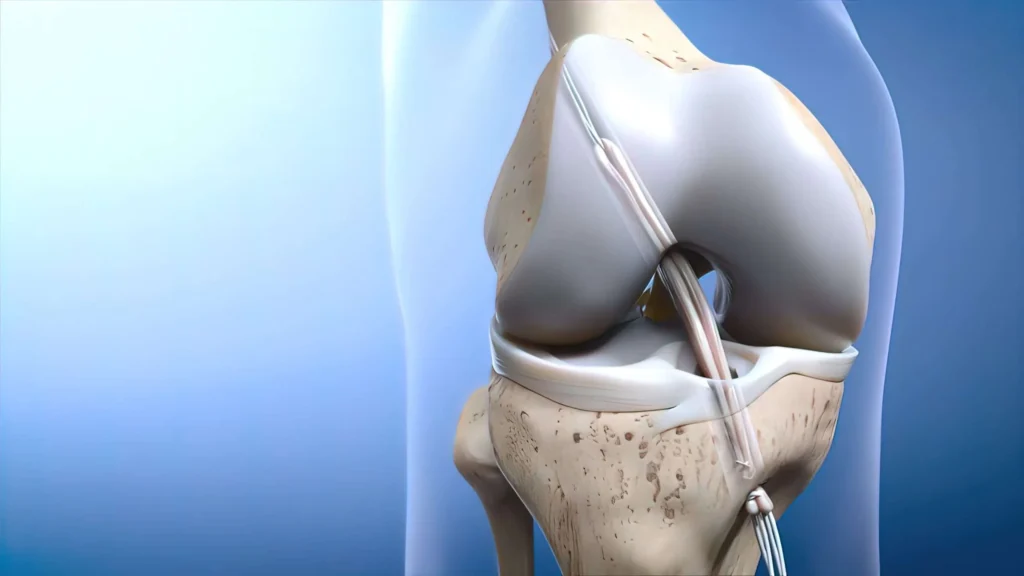Restoring Knee Stability & Function
The anterior cruciate ligament (ACL) is a key ligament in the knee that provides stability and support during movement. An ACL tear is a common sports injury, often occurring due to sudden stops, pivots, or direct impact to the knee. A torn ACL can lead to instability, pain, and difficulty performing daily activities or sports.
ACL reconstruction is a surgical procedure to restore knee stability by replacing the damaged ligament with a graft. This helps individuals regain strength, mobility, and confidence in their knee function.
Causes & Risk Factors of ACL Injuries
- Sports & High-Impact Activities – Common in football, basketball, skiing, and other sports that involve cutting, jumping, or rapid direction changes.
- Sudden Twists & Hyperextension – Movements that overstretch the knee can cause ligament tears.
- Direct Impact to the Knee – Common in contact sports or accidents.
- Weak Muscle Strength & Poor Conditioning – Increases stress on knee ligaments.
- Improper Landing Mechanics – Awkward landings from jumps can increase ACL strain.
Signs & Symptoms of an ACL Tear
- A popping sensation at the time of injury
- Immediate swelling and pain in the knee
- Difficulty bearing weight or walking
- A feeling of instability or knee giving way
- Limited range of motion and stiffness
Diagnosis of ACL Injuries
- Physical Examination – Assessing knee stability using tests such as the Lachman test or pivot shift test.
- MRI Scans – Provides detailed imaging of ligament damage.
- X-rays – Used to rule out fractures or other bone-related injuries.
Treatment Options for ACL Injuries
Non-Surgical Treatment (For Partial Tears or Low-Activity Individuals)
- Bracing & Knee Support – Provides stability for minor tears.
- Physiotherapy & Strengthening Exercises – Focuses on muscle rehabilitation and joint stability.
- Activity Modification – Avoiding high-impact activities to prevent further injury.
ACL Reconstruction Surgery
- Graft Selection – The damaged ACL is replaced with a graft, commonly from:
- Autograft – Patient’s own hamstring or patellar tendon.
- Allograft – Donor tendon for those preferring less invasive harvesting.
- Minimally Invasive Arthroscopic Procedure – Performed using small incisions and a camera for precision.
- Fixation of the Graft – Securing the new ligament with screws or anchors to promote healing.
Recovery & Rehabilitation After ACL Reconstruction
- Initial Recovery Phase (0-6 Weeks) – Pain management, swelling reduction, and gentle mobility exercises.
- Strength & Stability Phase (6-12 Weeks) – Progressive strengthening of the knee and balance training.
- Rehabilitation Phase (3-6 Months) – Sport-specific training and return-to-activity assessments.
- Full Return to Sports (6-12 Months) – Gradual reintegration into high-impact movements under medical guidance.
Why Choose Advanced Orthopaedics for ACL Reconstruction?
Specialist Knee Injury Treatment
Led by Dr Sarbjit Singh, a Senior Consultant Orthopaedic Surgeon, our clinic provides expert ACL reconstruction with personalised treatment plans.
Comprehensive Rehabilitation Programs
Our structured physiotherapy approach ensures optimal healing, strength recovery, and injury prevention.
Surgical Techniques
We utilise minimally invasive arthroscopic surgery and the latest graft fixation methods to enhance recovery outcomes.
Take the Next Step
If you have suffered an ACL injury and want to regain full knee function, early intervention is key. Schedule a consultation with our team at Advanced Orthopaedics to explore the best treatment options for your recovery.





